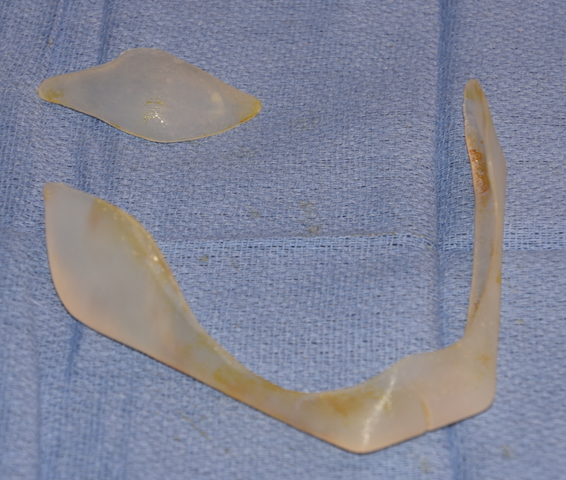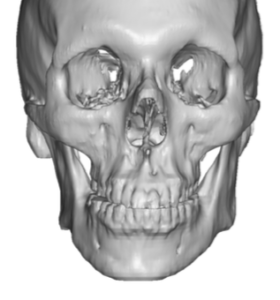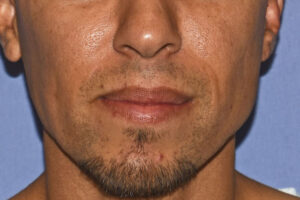Background: Facial asymmetries are very common and it is actually rare that anyone’s face is perfectly symmetric. Most of these facial asymmetries are located in the soft tissues and would be considered minor differences in the external soft tissue landmarks. But some asymmetries are more bone-based and thus affect larger external surface areas as the bone development between the two sides of the face are different.
In bone-based facial asymmetries the most common ones seen affect the lower jaw. Developing embryologically from the pharyngeal arches how they form and meet in the midline determines the symmetry of the lower jaw. When developmental asymmetry occurs it is almost always due to some underdevelopment of one side. Externally the chin is seen to deviate to one side with a jawline on that side as being higher and more narrow.
Short of more major jaw asymmetries which are associated with malocclusions and require orthognathic surgery, correction of these aesthetic jaw asymmetries requires external bone augmentation to balance out the two sides. A 3D CT scan will make clear as to the exact differences in the two sides of the jaw from which a corrective treatment can be devised. The ideal correction is a custom jawline implant that is preoperatively made based on the exact morphologic differences between the two sides.
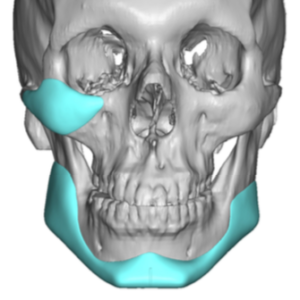

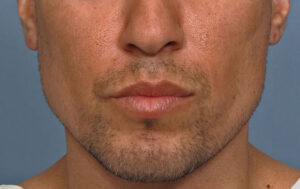
Case Highlights:
1) The most common form of facial asymmetry affects the lower jaw with one side smaller than the other.
2) The ideal correction of aesthetic jaw asymmetry is presurgical assessment with a 3D CT scan and a custom jawline implant to treat it.
3) Many male jaw asymmetry patients end up treating the the entire jawline for a dual benefit of asymmetry correction and an overall jaw augmentation effect.
Dr. Barry Eppley
Indianapolis, Indiana

